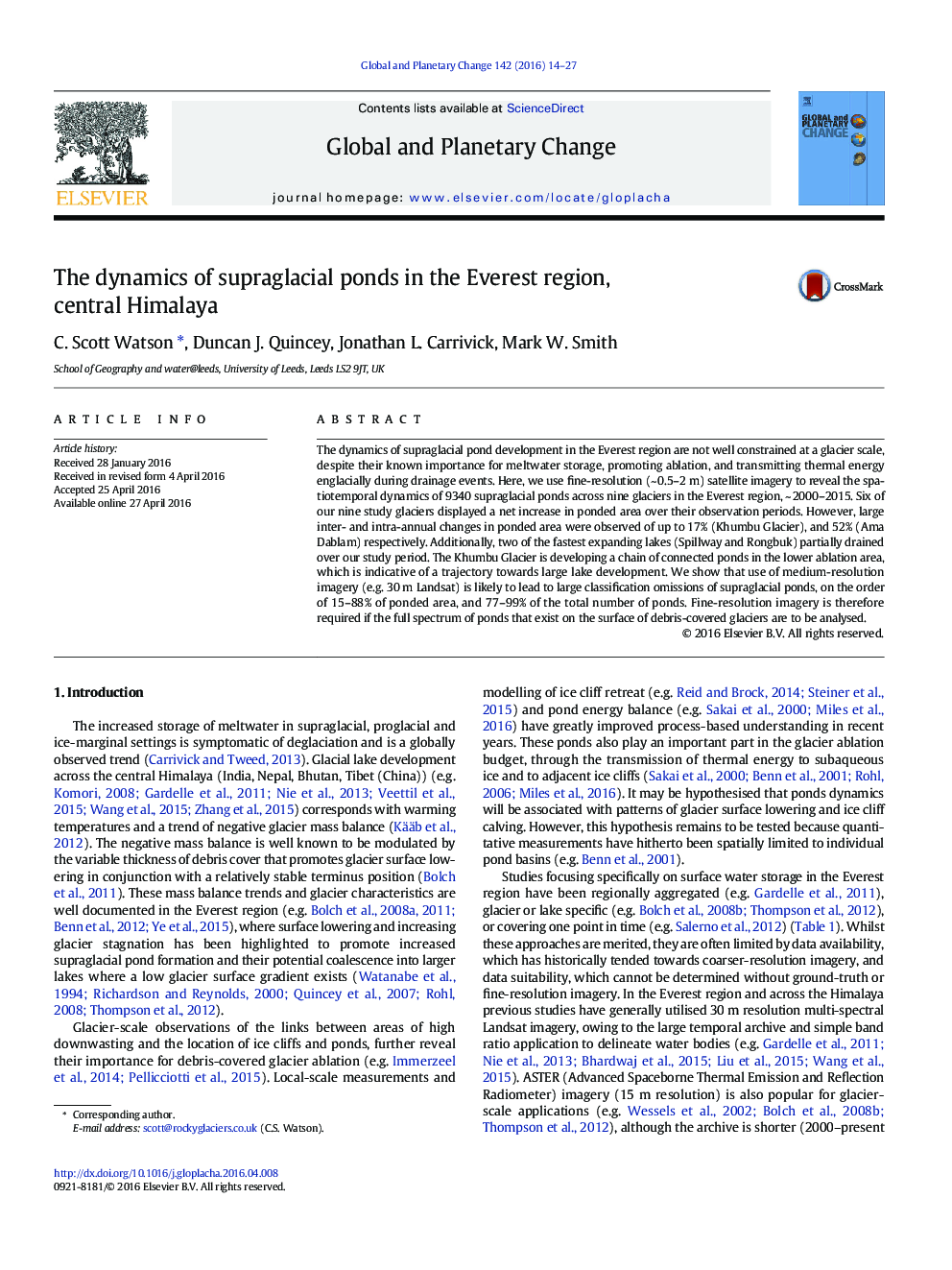| Article ID | Journal | Published Year | Pages | File Type |
|---|---|---|---|---|
| 6347918 | Global and Planetary Change | 2016 | 14 Pages |
Abstract
The dynamics of supraglacial pond development in the Everest region are not well constrained at a glacier scale, despite their known importance for meltwater storage, promoting ablation, and transmitting thermal energy englacially during drainage events. Here, we use fine-resolution (~Â 0.5-2Â m) satellite imagery to reveal the spatiotemporal dynamics of 9340 supraglacial ponds across nine glaciers in the Everest region, ~Â 2000-2015. Six of our nine study glaciers displayed a net increase in ponded area over their observation periods. However, large inter- and intra-annual changes in ponded area were observed of up to 17% (Khumbu Glacier), and 52% (Ama Dablam) respectively. Additionally, two of the fastest expanding lakes (Spillway and Rongbuk) partially drained over our study period. The Khumbu Glacier is developing a chain of connected ponds in the lower ablation area, which is indicative of a trajectory towards large lake development. We show that use of medium-resolution imagery (e.g. 30Â m Landsat) is likely to lead to large classification omissions of supraglacial ponds, on the order of 15-88% of ponded area, and 77-99% of the total number of ponds. Fine-resolution imagery is therefore required if the full spectrum of ponds that exist on the surface of debris-covered glaciers are to be analysed.
Related Topics
Physical Sciences and Engineering
Earth and Planetary Sciences
Earth-Surface Processes
Authors
C. Scott Watson, Duncan J. Quincey, Jonathan L. Carrivick, Mark W. Smith,
